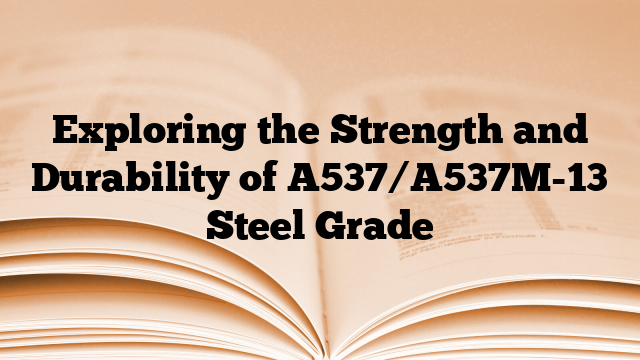The A537/A537M-13 steel grade is a standard specification for pressure vessel plates, heat-treated, carbon-manganese-silicon steel. It is commonly used in the construction of pressure vessels and boilers.
The primary chemical composition of the A537/A537M-13 steel grade includes carbon, manganese, silicon, phosphorus, sulfur, and small amounts of copper, nickel, chromium, molybdenum, and vanadium. The exact composition may vary depending on the manufacturer and specific requirements.
The mechanical properties of the A537/A537M-13 steel grade are crucial in determining its strength and durability. These properties include tensile strength, yield strength, elongation, and impact resistance. The steel grade must meet specific requirements for these properties to ensure it can withstand the high pressures and temperatures experienced in pressure vessels and boilers.
The standard number A537/A537M-13 refers to the specific version of the ASTM A537/A537M standard that the steel grade adheres to. This standard provides guidelines for the manufacture and testing of pressure vessel plates made from carbon-manganese-silicon steel.
The corresponding steel grade refers to the equivalent grades of the A537/A537M-13 steel grade in different international standards. This allows for easy comparison and identification of the same or similar materials in different regions or industries.
Overall, exploring the strength and durability of the A537/A537M-13 steel grade involves investigating its chemical composition, mechanical properties, adherence to specific standards, and identification of corresponding grades. This information is essential for engineers and manufacturers involved in the design and production of pressure vessels and boilers.

